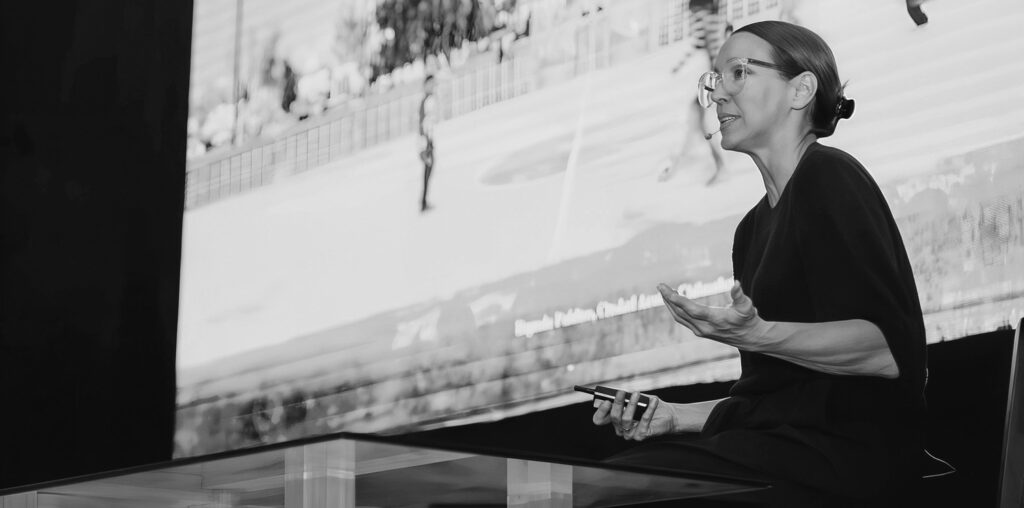
Architecture and urban planning in Latin America face deeply rooted social, environmental, and economic challenges shaped by historical inequalities, rapid population growth, and unplanned urbanization. Addressing these issues requires innovative solutions that balance housing needs, ecological preservation, and respect for local identities. Amid this complex landscape, several visionary female architects are making a difference with creative and impactful approaches.
These professionals prioritize social inclusion and quality of life, leading the way in designing spaces that meet the needs of their communities. Confronting challenges like resource scarcity and climate change, they embrace creative and resilient strategies that reflect and celebrate Latin America’s rich culture and identity.
In this article, we highlight four interviews conducted by ArchDaily over the years with Latin American female architects who share inspiring insights and strategies for overcoming the challenges of this complex reality. Read on to discover 4 interviews with Latin American female architects who share inspiring insights and strategies for overcoming the challenges of this complex reality.
Related Article
Tatiana Bilbao: Life Changes Every Second, But Architecture Never Changes
Tatiana Bilbao, a Mexican architect and founder of Tatiana Bilbao Estudio in Mexico City, is renowned for her focus on sustainable design and social housing, with projects across Europe and China. Winner of several prestigious awards, including the UNESCO Global Award for Sustainable Architecture in 2014, Bilbao highlights how she integrates Mexican cultural identity into her work through adaptability and resilience.

We have this capacity to reinvent ourselves with what exists, with what there is, and with what we are given. Not only to reinvent ourselves, but to invent, to create, dismantle, and build an entire country with the resources at hand. It is a very different capacity that this country has given me, the ability to be very creative with the resources I have, something that does not exist in other contexts where there is much more abundance.
Tainá de Paula: A New Urban Model for a New Project of Society
Tainá de Paula, an architect and community organizer in peripheral areas, is a prominent activist tackling Brazil’s urban struggles. She has contributed to numerous urbanization and popular housing projects, providing technical assistance to housing movements. In this interview, Tainá advocates for the role of public space in redefining society, proposing a new urban framework that addresses structural inequalities, challenges established models, and incorporates local experiences into the process.

Curiously, the public sphere in Brazil has always guided the relationships in all social classes. From the romantic English style Passeio Público to the beaches and public Capoeiras of Rio de Janeiro and Salvador, either because of the climate, the interest in having a public life, or the structural obstacles that place a large number of slum dwellers on the streets because of low-quality housing, Brazilians need to invest more in urban public space and return to their ancestral customs
Glória Cabral: Everything Begins With the Wisdom of a Place
Born in Brazil and trained in Paraguay, Gloria Cabral’s work is defined by a deep understanding of the geography, culture, and social conditions of the places she designs for. Her influence spans buildings and artistic installations across diverse locations, from Asunción to Venice. In this interview, she reflects on the importance of contextual awareness in architecture, emphasizing how it drives creative and functional solutions.

One characteristic of Paraguay‘s landscape is that temperatures can reach almost 50ºC. So, my practice revolved around figuring out how to create architecture that does not rely heavily on air conditioning. At Gabinete de Arquitectura, our research heavily focuses on creating shading structures to shield us from the sun — a crucial aspect that has always held great value in Paraguay. The challenge now is dealing with extreme heat in places not accustomed to such temperatures. It has become a global necessity.
Julia Peres e Victoria Braga, RUÍNA Arquitetura: Reversing Design Order through Material Recycling
RUÍNA Arquitetura, a São Paulo-based studio led by two partners, is dedicated to fostering socio-environmental awareness through its design practice. The studio creates more sustainable solutions by repurposing materials, reducing demolition waste, and providing construction materials with a lower environmental impact. In 2024, RUÍNA was recognized as one of ArchDaily’s Best New Practices. In this interview, Julia and Victoria discuss their design approach and advocate for a paradigm shift in “underdeveloped” contexts, aiming to promote autonomy in diverse socio-economic settings.

Just as in Brazil, a significant portion of the Global South, often labeled as “underdeveloped,” grapples with a reality where reuse is not merely an option but a vital response to underlying socioeconomic constraints. The challenges affecting our nation and many others stem directly from global-scale development, rather than being symptoms of alleged underdevelopment. Hence, the potential for transcending this context lies in advocating for profound shifts in our understanding of development.
This article is part of the ArchDaily Topics: Women in Architecture presented by Sky-Frame.
Sky-Frame is characterized by its empathic ability to take on different perspectives and points of view. We are interested in people and their visions, whether in architecture or in a social context. We deeply care about creating living spaces and in doing so we also question the role of women in architecture. From the arts to the sciences, women shape our society. We want to shed more light on this role, increase the visibility of Women in Architecture and empower/encourage them to realize their full potential.
Initiated by Sky-Frame, the “Women in Architecture” documentary is an impulse for inspiration, discussion, and reflection. The film’s release is on November 12, 2024.
Every month we explore a topic in-depth through articles, interviews, news, and architecture projects. We invite you to learn more about our ArchDaily Topics. And, as always, at ArchDaily we welcome the contributions of our readers; if you want to submit an article or project, contact us.





